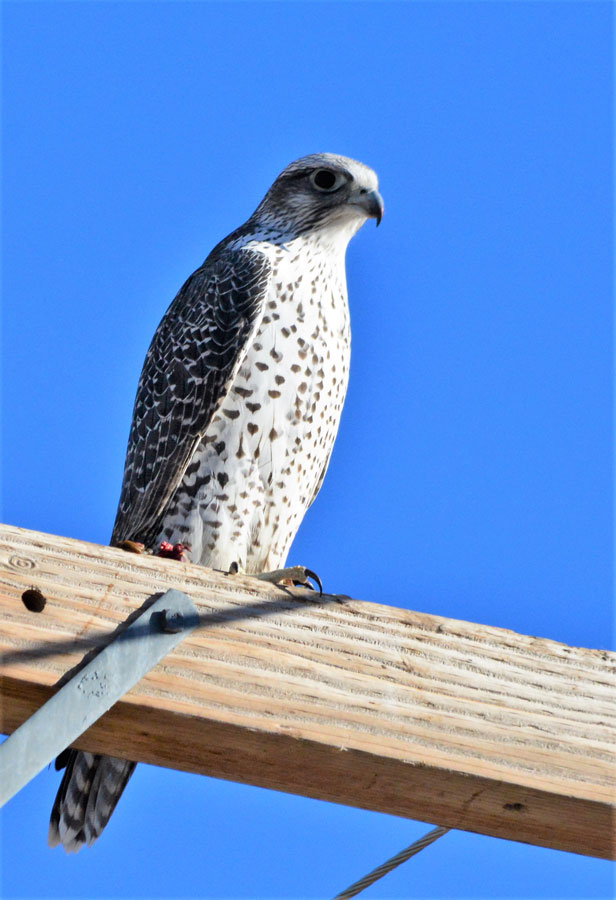The hunt for a Gyrfalcon
Published at
I felt like a student as I rode in the back seat listening to two experts in the front seat identify bird after bird and why it was this bird and not that bird. Time was the essence as we covered the roads assigned to us. Their identification was quick and accurate as far as my slow, infant-bird identification brain would allow me to keep up.
It was Dec. 27, 2017, near Howe for the annual Christmas Bird Count and though I was the oldest by far, but in birding-years and identification I was decades behind. What an education I got in the seven hours as I listened, observed through my cheap binoculars and even got a few pictures.
Steve Butterworth and Darren Clark were my mentors and we were three of a group of nine counting and recording every bird we saw in our assigned area of a 17-mile radius around the small community of Howe. Our area was most of the farm ground north of Idaho Highway 33 that contains one of the largest winter populations of raptors in the nation.
While meeting at the Howe Community Center local falconer, Jack Oar told us about a Gyrfalcon that had been located it our assigned area. Mention a gyr in Idaho and locating it becomes a priority for birders.
“It usually sits on the fourth pole east of the little substation off 1800,” Jack explained. “If it isn’t there it usually hangs out on a pole just past the “No Trespassing” sign or the third pole to the south of the sub.”
We headed that way, slowly of course, counting birds at a feeder – nothing out of the ordinary. We went into the fields and found multiple Rough-legged hawks mostly resting on irrigation pivots and hundreds of ravens scavenging the fields. We found the substation but no gyr, there were plenty of falcons around but they were Prairies and American kestrels.
After covering about half the roads and identifying about 30 species of birds, we checked for the gyrfalcon on our way back to the center for lunch and a conversation with the other birders.
“We found a Blue jay by the cemetery,” Teresa Meachum and Kit Struthers told us. “It is pretty skittish but we got some good looks at it.”
“Connie (Jack’s wife) and I got permission to look for owls on some private property where we located more than 45 Long-eared and nine Barn owls,” Jack said.
Common Redpolls as well as a Cooper’s hawk, Marsh wrens and robins had been found by Mark Delwiche and Justin Frye.
After lunch Steve, Darren and I quickly found the blue jay and birded back toward the substation – still no bird but we did find two Ferruginous hawks and a Merlin to add to our raptor list. Chukers were found near a cattle feed yard with hundreds of pigeons, collared doves, house sparrows and starlings, all possible dinner for the falcons.
As we were winding down our survey one more trip past the substation. On the fourth pole to the east of sat a large falcon-like bird.
“There it is! See all the gray on it! What a beautiful bird,” exclaimed Clark as we headed toward it. The bird flushed and flew to the next pole. “Let me out and I will walk along the truck to hide from it,” Clark instructed Butterworth.
After a couple of attempts, photos were taken before it flew off to rest on a pivot about a quarter of a mile away. We headed back to the community center to report our findings. Jack had found three more gyrs and a total of 32 Prairies and 213 Rough-legs had been found all of which may be national records for the 2017 Christmas Bird Counts.
A total of 46 species had been identified and counted as the high mountain valley as the world darkened, putting the birds to sleep.
On Janm 1, 2018, I celebrated by heading back to Howe, alone; looking for the rare falcons. Jack was also there and together we observed two gyrfalcons – one on the fourth pole east of the substation.
Living the Wild Life is brought to you by The Healing Sanctuary.







